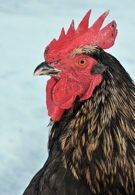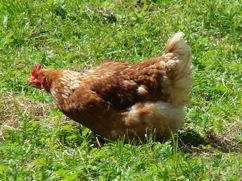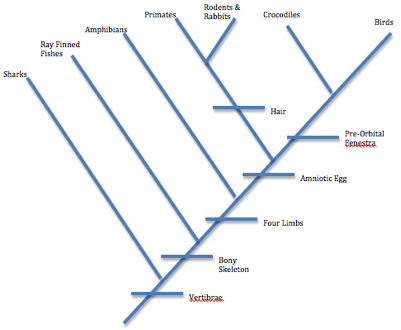Chicken Phylogeny: What’s In A Name?


Eukaryotes are defined as an organism with advanced internal structure such as a true nucleus and membrane bound organelles.
Animals are typically multicellular and heterotrophic in nature. They are largely motile and possess offspring that pass through a blastula stage.
Chordates are identified by possessing a post-anal tail as well as gill slits, a dorsal nerve chord and notochord at some point in their development.
More commonly known as “birds”, the Aves are two legged, warm blooded organisms. They have developed feathers as well as wings for flight, which most Aves are capable of.
This Order is what many could call the “game birds”. Other Galliformes include turkey, pheasant, chickens and grouse.
The Phasianidae Family contains species of birds such as partridges, pheasants, chickens, and some jungle fowl.
Organisms in the Genus Gallus trace their lineage to the so-called “wild chicken”. From this, the domesticated chicken developed.
Gallus gallus is the species that people identify as the the common domesticated chicken. From the hens of Gallus gallus come the eggs which are used in vaccine generation.
The common chicken’s taxonomy contains a subspecies to further identify it, making the full and proper name:
Gallus gallus domesticus
Ben Axell, 2011
For more information on how the egg is used, the chicken, or how the phylogeny breaks down, follow the links below!
The Phylogenic tree below shows some of the evolutionary relationships with some animals that may fall phylogenically closely to the domestic chicken. Based on common anatomy the pigeon, goose and finch fell closely in line with the location of the chicken. I found it interesting that the chicken could actually be monophyletically related to the sheep. Who knew??
Image: Ben Axell. Image derived from Phylogenic Tree at http://www.biolsci.org/
Image: Ben Axell
Photo Credit: Chicken- Mindaugas Urbonas
Photo Credit: Black Bovan- Michael Gabler
The tree below shows a division of several key members of the vertebrates and also indicates key physical developments that lead to their divergence from a common ancestor. Some important items that place the chicken where it currently is placed, would be the the presence of a bony skeleton, and the amniotic egg which allowed this lineage to largely break away from the water. The birds and crocodilians also share a pre-orbital fenestra, or a relatively large holes in the skull used for weight reduction. Weight reduction is a paramount adaptation for members of the Aves.
Image: Ben Axell. Image derived from Phylogenic Tree at WWW.staff.fcps.NET



